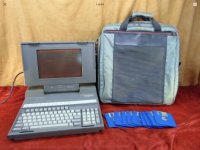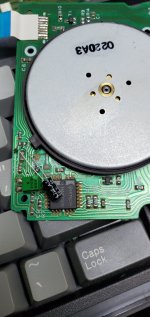MeepsterNotchy
Member
I have just received my Toshiba T3200 from eBay, and it works great! Boots up, all the programs work fine, but the floppy drive doesn't work one bit. It came with a stack of (presumably) blank unlabeled disks, and I tried with my own DD disks, but it always says "Error reading drive A: Abort, Retry, Fail?"
If I type cd A:, dir A:, or chkdsk A: it all gives the error message.
I have a working floppy drives around (wrong color though :roll and was wondering if the floppy drive was proprietary or used a standard 34 pin interface?
and was wondering if the floppy drive was proprietary or used a standard 34 pin interface?
Help much appreciated!

If I type cd A:, dir A:, or chkdsk A: it all gives the error message.
I have a working floppy drives around (wrong color though :roll
Help much appreciated!



